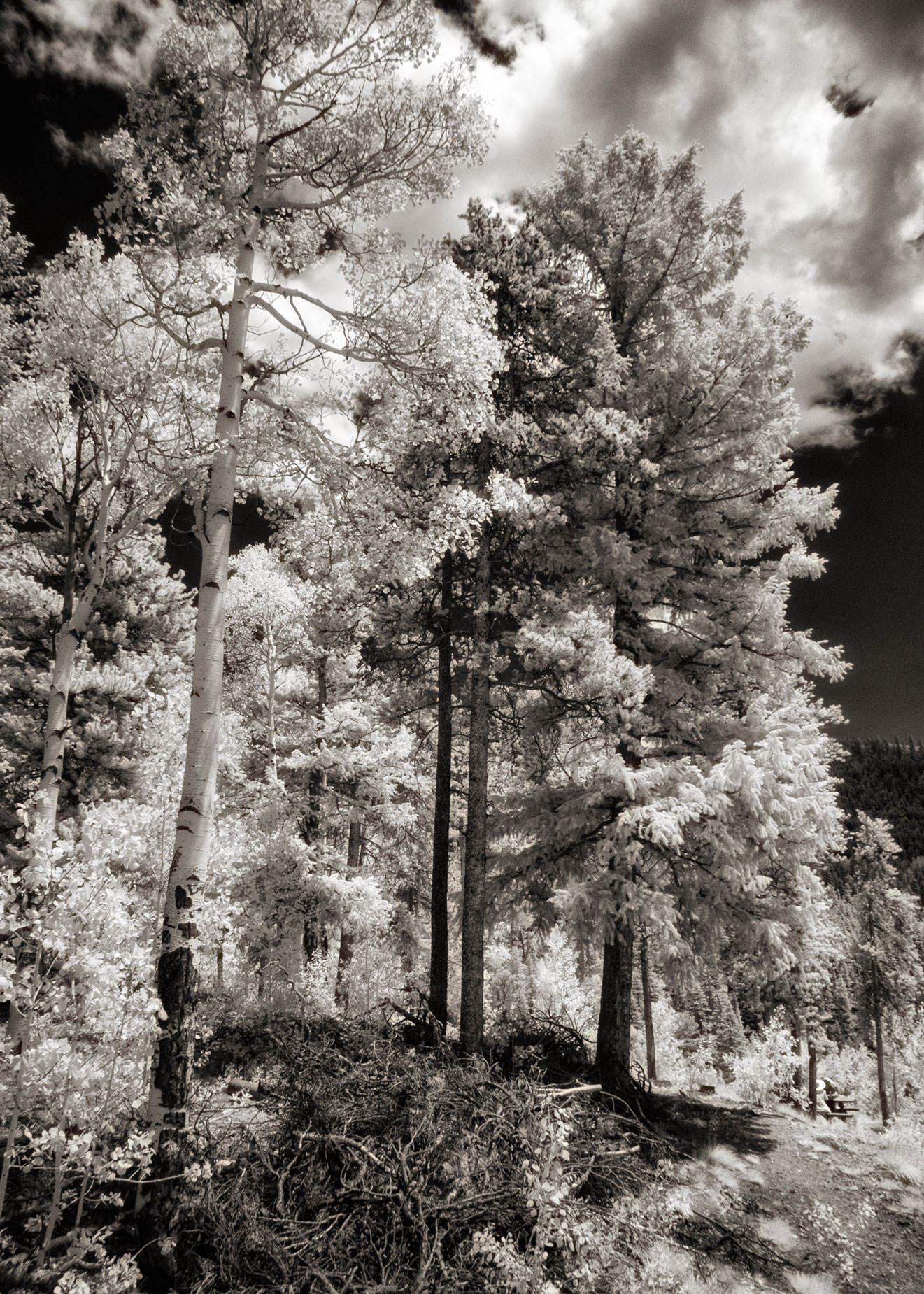Today’s Post by Joe Farace
Trees are sanctuaries. Whoever knows how to speak to them, whoever knows how to listen to them, can learn the truth. They do not preach learning and precepts, they preach, undeterred by particulars, the ancient law of life.—
The Arapaho and Roosevelt National Forests and Pawnee National Grassland is located in north central Colorado, a short drive from the Denver Metro Area. The forests and grassland encompass 1.5 million acres and extends as far north as the Wyoming border, then south to Mount Evans (14,130 feet), then west across the Continental Divide to the Williams Fork area and includes short grass prairie east of I-25.

Regular readers of these posts may notice that this photograph looks a little different from some of the other images I’ve made with the Panasonic Lumix G6 that had been converted with LifePixel’s Enhanced Color filter (665nm.) Even the RAW files looked somewhat different to me and appeared similar to files that made with my Lumix G5 that has the Standard IR filter (720nm) installed. This was true not just or this image but all of the others I made that day, which got me to thinking—why?
Let’s look at the environment: The forest is dominated by Englemann Spruce, Subalpine Fir and Limber Pine along with some Aspens. Three of these are evergreen trees that typically don’t exhibit the kind of classic Wood Effect in infrared photography that deciduous trees do. I’m also not so sure how much elevation—we were at 10,500 ft—plays into the infrared effect. All of the reference material I could find about elevation and infrared photography relate to aerial photography, which is kind of why infrared film—color and black and white—was invented in the first place. If anybody who knows anything about this topic, I would appreciate some advice.
Because inquiring minds want to know, In the spring when I head into the Rocky Mountains, I plan to bring along my Panasonic Lumix G5 that was converted with LifePixel’s Standard IR filter and make some side-by-side comparisons and whatever the results may be, I will share with you here in a future post.
How I made this shot: The image at right was made in the Arapaho National Forest, not far off the road to Mount Evans in Colorado. It was shot using a Panasonic Lumix G6 that had been converted to infrared-only operation by LifePixel, It was made using a Lumix G Vario 12-32mm f/3.5-5.6 lens at 12mm (24mm equivalent.) The exposure was 1/400 sec at f/13 and ISO 400. The RAW file was opened in Adobe Camera RAW then converted to monochrome and then toned with a little Glamour Glow to add some infrared glow.
